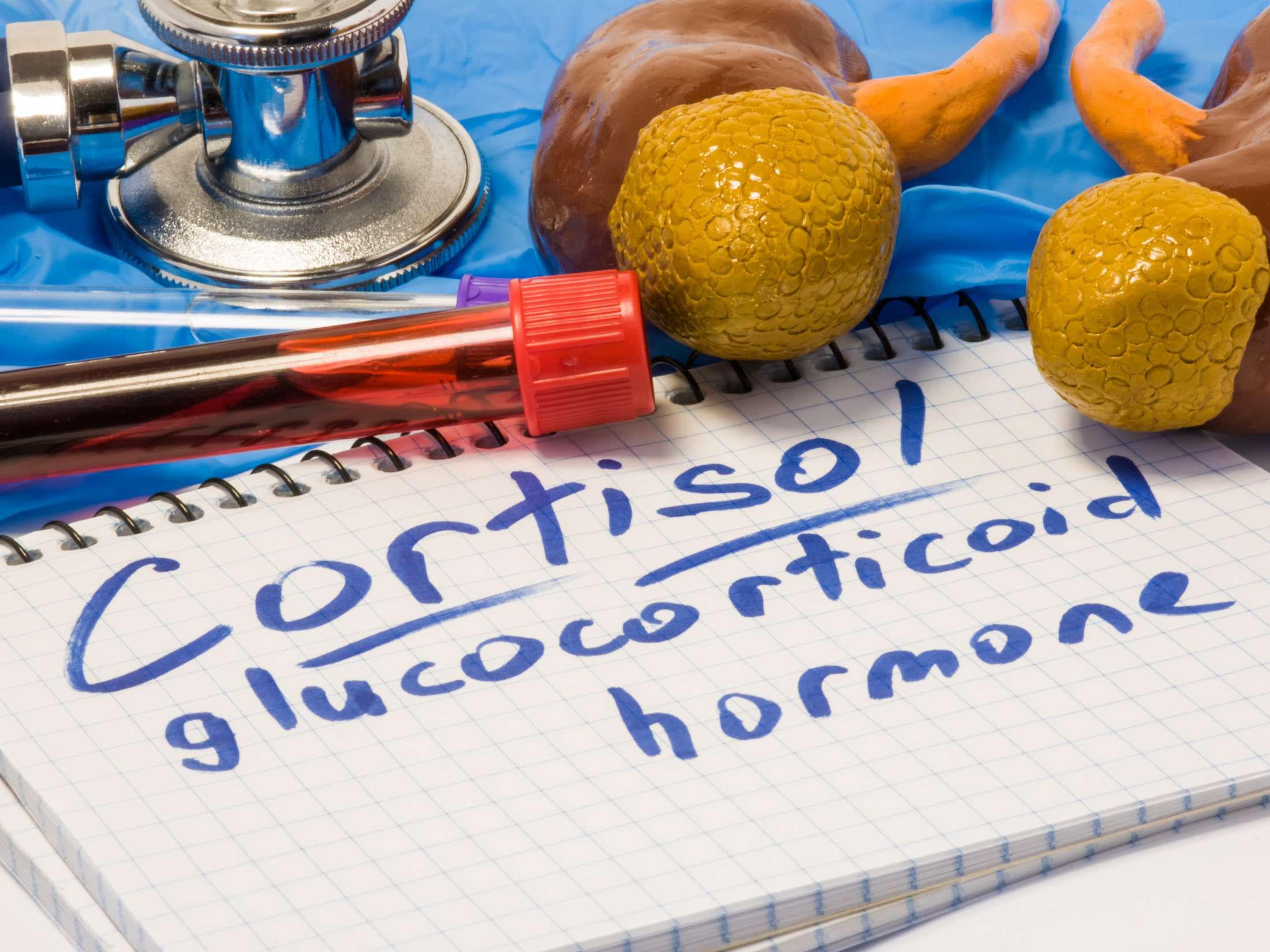Cushing disease and Cushing syndrome have similar symptoms but are distinct conditions with different possible causes and treatments.
It is important for people to consult a doctor for a proper diagnosis and to receive the appropriate treatment. Learn more about these two conditions, their symptoms, diagnosis, outlook, and when to contact a doctor.
Cushing disease and Cushing syndrome can have similar symptoms, though these can vary between people.
Cushing syndrome symptoms
Cushing syndrome can cause various symptoms, including:
- weight gain, particularly in the upper body
- fragile skin that bruises easily
- rounded face
- excess fat on the upper back and collarbones
- muscle weakness
- loss of muscle
- stretch marks on the abdomen and under the arms
- easily bruised, fragile skin
- excess facial hair in females
- thinning bones
- cognitive difficulties
- depression
- high blood sugar
- high blood pressure
Cushing disease symptoms
Cushing disease shares many of the same symptoms as Cushing syndrome. Possible symptoms include:
- acne
- red cheeks, which may be more noticeable on lighter skin
- increased fat on the neck, upper back, and collarbone
- rapid and unexplained weight gain
- stretchmarks on the flanks, chest, armpits, or abdomen
- round face
- round abdomen
- memory loss
- mood and behavior disorders
- depression
- fatigue
- blood clots in the legs
- fractures
- menstrual cycle disorders
- muscle weakness
- osteoporosis
- high blood sugar
- high blood pressure
- heart attack
- stroke
Cushing disease is the most common cause of Cushing syndrome. It is responsible for 70% of cases of Cushing syndrome in adults and 60% to 70% of cases in children and adolescents.
Cushing disease causes
Cushing disease is due to benign tumors of the pituitary gland known as pituitary adenomas. These tumors release an excessive amount of a hormone called adrenocorticotropic hormone (ACTH).
This, in turn, causes the body to produce more cortisol. Prolonged exposure to this elevated level of cortisol causes the symptoms of both Cushing disease and Cushing syndrome.
Cushing syndrome causes
Cushing syndrome can have several causes. They may be exogenous (due to factors outside the body) or endogenous (due to factors inside the body).
The majority of cases of spontaneous Cushing syndrome result from Cushing disease and tumors of the pituitary gland. This accounts for 60% to 70% of Cushing syndrome cases that occur spontaneously (without an obvious trigger).
A common cause of exogenous Cushing syndrome is the long-term use of high dose cortisol-like glucocorticoids. These are a type of medication to treat conditions like asthma, lupus, and rheumatoid arthritis.
Tumors outside the pituitary gland can also lead to Cushing syndrome. This is known as ectopic ACTH syndrome.
Typically, these tumors occur in the lungs but may also develop in the pancreas, thyroid, and thymus.
In some cases, tumors on the adrenal gland can also cause Cushing syndrome.
Some people are more likely to get Cushing disease or Cushing syndrome than others.
Cushing disease risk factors
Cushing disease is more likely to affect people between the ages of 20 and 50 years. However, in some cases, children may also be affected.
For unknown reasons, females are more likely to be affected by Cushing disease than males.
Cushing syndrome risk factors
As with Cushing disease, Cushing syndrome is more common in adults, though it is also possible in children.
Some people may develop Cushing syndrome due to conditions that make them more likely to develop tumors on endocrine glands. These include conditions such as:
- primary pigmented micronodular adrenal disease
- multiple endocrine neoplasia type 1 (MEN 1)
If a person experiences any symptoms that concern them, they can consider contacting their doctor. This includes symptoms that may indicate Cushing disease or Cushing syndrome.
If someone is taking cortisol-like glucocorticoids, they may also choose to speak with a doctor about any risks involved.
Cushing disease and Cushing syndrome can be difficult to diagnose.
Physicians may undertake various tests to determine whether a person has Cushing disease or Cushing syndrome. These include:
- 24-hour free urinary cortisol test: Urine is collected over 24 hours to measure cortisol levels.
- Late-night salivary cortisol test: A saliva sample is taken late at night to test cortisol levels.
- Low dose dexamethasone suppression test (LDDST): A glucocorticoid medication is given in the evening, followed by a blood test the next morning.
- Dexamethasone–CRH test: A simulation test involving taking a hormone and a medication to see the body’s response.
Along with these tests, doctors will make a diagnosis based on medical history and a physical exam.
In addition, if a doctor confirms Cushing syndrome, they may undertake further tests to determine the cause. This can help identify whether pituitary, ectopic, or adrenal tumors caused the syndrome and subsequently guide treatment decisions.
These tests include:
- blood tests
- CT scans
- MRI
- petrosal sinus sampling
Petrosal sinus sampling involves receiving a hormone shot and taking blood samples from the petrosal sinuses at the same time as a blood vessel far from the pituitary gland.
Treatment decisions may depend on the cause.
Cushing disease treatment
The first-line treatment of Cushing disease is the surgical removal of the tumor on the pituitary gland. The success rate may be as high as
If surgery does not completely remove the tumor, doctors may suggest radiation therapy. They may also recommend medications to reduce the production of cortisol.
Cushing syndrome treatment
There are various treatment options for Cushing syndrome, which vary based on the cause.
If Cushing syndrome is due to prolonged use of cortisol-like medications, these medications may be slowly decreased and eventually stopped if safe to do so.
Surgical removal of tumors is another treatment option. For some people, radiation therapy, chemotherapy, and medications may also be necessary.
In some cases, treatment will require removing both adrenal glands.
It is not possible to prevent Cushing disease or Cushing syndrome caused by tumors.
However, in Cushing syndrome due to prolonged use of cortisol-like glucocorticoids, it may be possible to avoid the condition by reducing or stopping the use of these medications where appropriate.
What is the life expectancy of a person with Cushing disease or syndrome?
A 2022 study suggests that people with Cushing disease have increased overall mortality. Those with Cushing disease had more than double the rates of death compared with control groups. Cardiovascular disease and infection were the main causes of death.
Research from 2019 suggests that in people with Cushing syndrome, mortality is also increased, even among those who have received treatment. This is particularly the case for those not in remission.
The exact life expectancy of these conditions varies among people.
How long can you have Cushing disease or syndrome without knowing?
Not everyone with Cushing disease or Cushing syndrome will have obvious symptoms, which can make it difficult to detect.
What happens if Cushing syndrome goes untreated?
Without treatment, Cushing syndrome can cause fatal complications such as heart attack and stroke.
Cushing disease and Cushing syndrome are similar but distinct conditions. While their symptoms can be similar, the causes and treatments can differ.
It is important to consult a doctor for the proper diagnosis and treatment.




